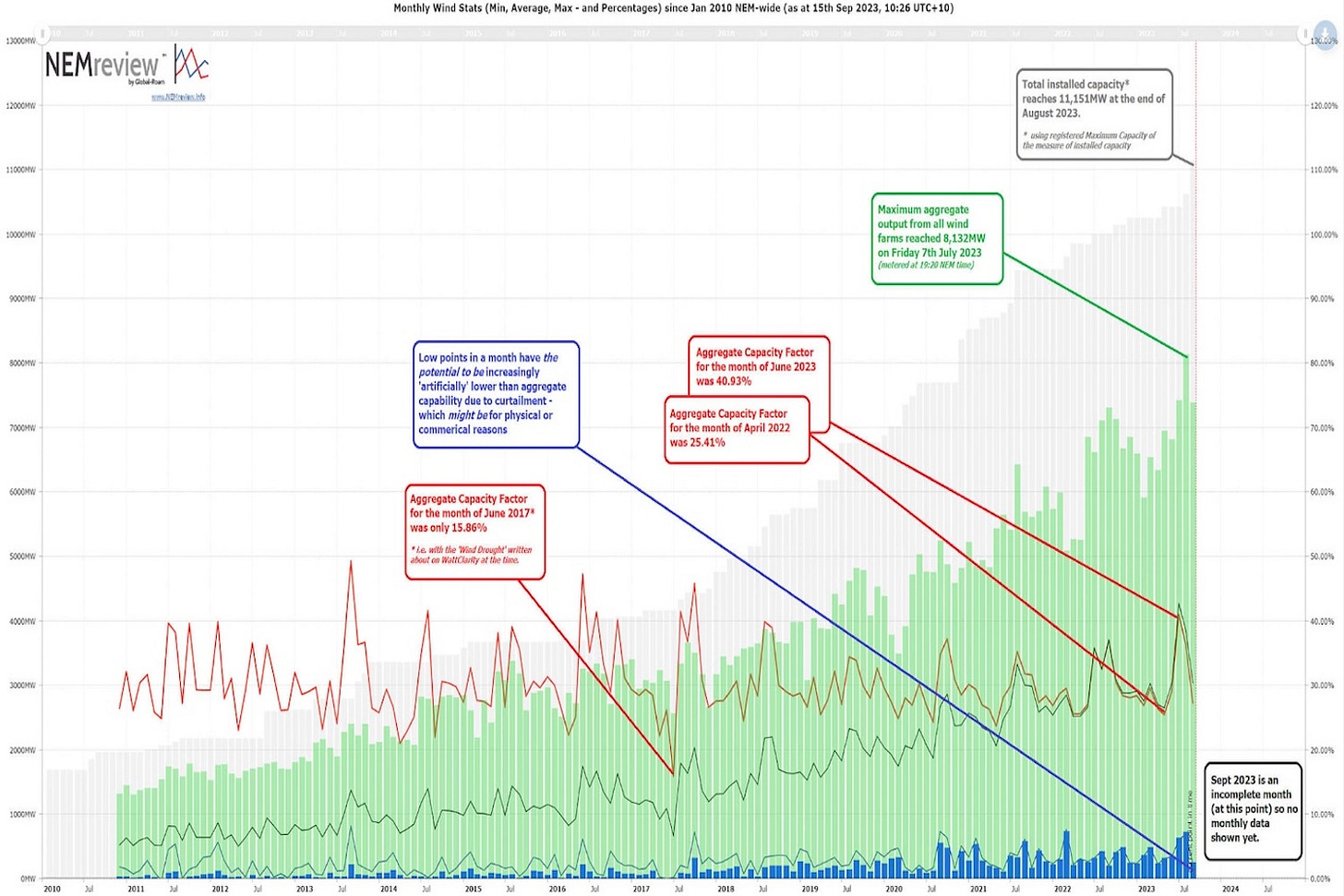A Powerful Warning for the Many from Some Australian Energy Realists
Australia bought into green energy political correctness early on as phony conservatives signed on to the scam along with the usual leftist suspects. There are plenty of energy realists, though, some of whom have nicely summarized the facts in a collection of briefing notes. The notes are links to fuller discussions and I have put a few of them into a slightly different format below:
The Choke Point – When the Wind Fails and the Grid Dies
Wind droughts occur frequently across the whole of SE Australia when high pressure systems linger. These droughts ensure that wind and solar power will not replace conventional power any time soon.
Four Icebergs in the Path of Renewables Titanic
Four features of the Australian situation make the RE transition practically impossible with existing technology. These are wind droughts, the need for continuous input to the grid, our island status (no extension cords) and lack of large-scale storage.
The RE transition is limited by the lowest point of wind and solar generation on low-wind nights (effectively zero), not the installed capacity, the high points or the average.
Australia, being an island, is seriously disadvantaged in attempting to achieve ambitious renewable energy targets because we can’t run extension cords to other countries to obtain power when we are short.
Lessons from the Californian Blackouts
California has run down its coal, gas and nuclear capacity and now depends on power from other states during periods of maximum demand. As the other states run down their conventional power, Californians are now being subjected to “demand management.”
Environment Destruction – The Dark Side to Renewable Energy
The supply chains of the wind and solar industry leave footprints of human and environmental disaster through several steps from exploration and mining to the disposal of toxic wastes at the end of the road. Climate control strategies are like chemotherapy for the planet but the treatment is damaging people and the planet while extra CO2 is greening it.
Solar and Wind Power Can Displace Coal But Cannot Replace It
Increasing the penetration of unreliable energy from the wind and the sun into the electricity supply can make coal power stations uneconomic but cannot replace them.
The rate of exit from coal is not accelerated by increasing penetration on good days, it is limited by the lowest level of output on nights with little or no wind, as a convoy travels at the speed of the slowest vessel, the water penetrates the levee at the lowest point, a chain is only as strong as the weakest link and stock get out of the yard through gaps even if the rest of the fence is built to the sky.
As long as periods with effectively zero solar and wind power persist, 100% backup from conventional power will still be required, assuming that we want security of supply. This means that we will have to keep burning coal until nuclear power is on deck.
The Downside of Electric Vehicles
The misplaced enthusiasm for electric vehicles matches the hype for green hydrogen.
The list of problems is so long that you need to read the note to appreciate them. Consider the social injustice of subsidies for well-off people who can afford EVS, the human rights of workers in the supply chain, the danger of fast-moving and soundless missiles on the road, the fire hazard, the volume of minerals and mining required, the extra demand for power (which will be more expensive, thus undermining the economy of driving evs), the need to drive almost 100,000km to balance the extra CO2 generated in building the ev, the charging infrastructure required, the limited life of the battery compared with conventional vehicles, the limitations of EVs during emergencies - fires, floods, power blackouts.
The Small Capacity of “Big” Batteries
False and misleading claims about the firming capacity of so-called “big batteries” must cease to enable a sensible debate about the future of the power supply.
For a start, journalists who rate the capacity of batteries in MW instead of MWhrs should be promptly escorted from the building, with their personal effects thrown into the street after them.
Check out the entire series of briefing notes.
#Australia #Energy #EnergyRealism #Renewables #Coal #Nuclear




You highlighted an important point toward the end of your article regarding the journalists who discuss battery capacity in terms of power W instead of energy Whr. The general public does not understand the difference. Those on the left, fanatically committed to renewables, capitalize on this ignorance. For example, when they talk about wind farms they typically mention installed capacity GW instead of generation GWh. This is an intentional form of obfuscation or lying by omission - since it is well known that capacity factors for wind farms are typically very low in the range of 25 to 30%. So just to provide a concrete example let's take Texas which has the most wind power in the US at 40 GW. Over the course of a year this produces about 100 terawatt hours TWh of energy. With a good nuclear power infrastructure you could probably get the same energy production with about 12 GW of installed capacity.
Many of us involved in energy and electricity generation knew years ago that the “Green Scam” was not about protecting the environment. I hope it is not too late for voters to figure it out.